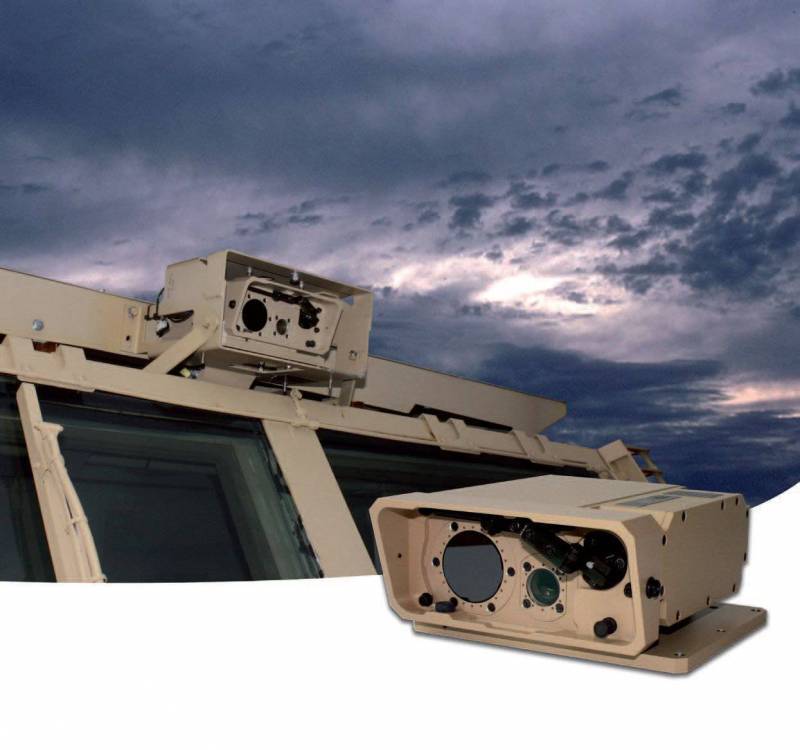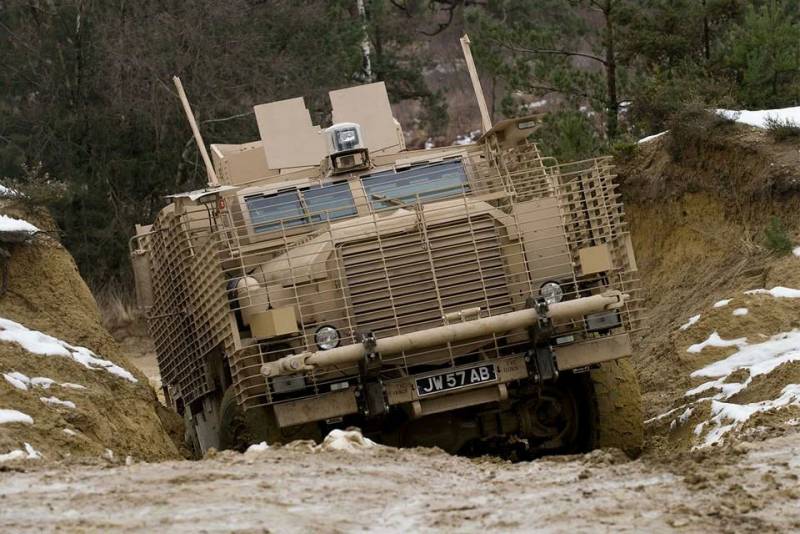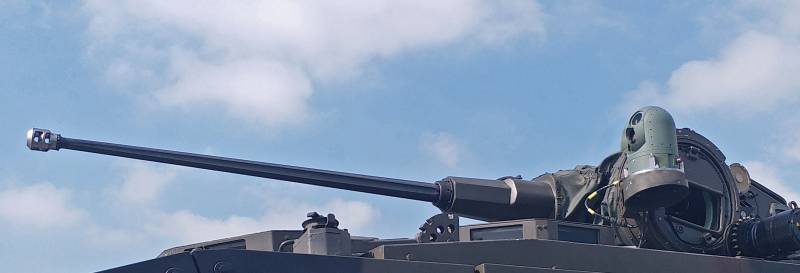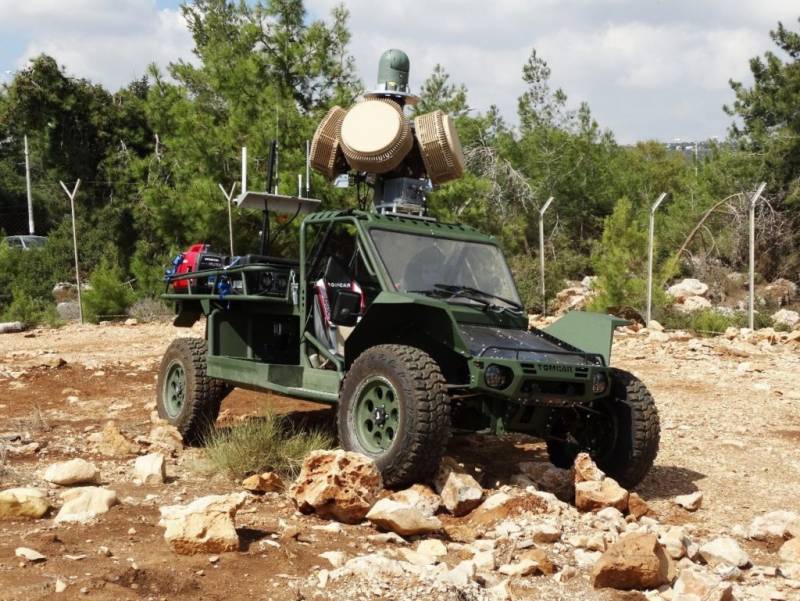And the night is not a hindrance! Night Vision Development Trends
Machine-installed night vision systems have been produced for many years and are now becoming commonplace, but significant changes await us ahead in this market.
For example, there is a growing demand for higher resolution night cameras. A spokesman for the French infrared receiver company Sofradir said this could be achieved by increasing the number of pixels and decreasing the spacing between them while maintaining the dimensions of the matrix in order to ensure low weight and power characteristics of the device.
- He explained.
In order for these cameras to show the best possible capabilities, they must be properly stabilized, since armored vehicles operate on rough terrain with a very difficult terrain. According to a representative of Controp Precision Technologies, if the system is not stabilized well enough, "then the image will be of unacceptable quality and the range of the device will decrease dramatically."
The representative of Sofradir reported:
Highlighting problems
Traditionally, night vision systems have been used for two main purposes. Firstly, the driver’s night vision devices, which allow to increase the level of knowledge around the car for safe and trouble-free maneuvering. Secondly, there are sighting systems used by arrows to identify and aim at potential targets.
Infrared systems for drivers and to increase their level of knowledge of the environment are usually uncooled thermal imaging cameras with a wider field of view at close range to have the greatest possible view, while sights for shooters, especially for large-caliber weapons, for example, 120- mm guns tanksequipped with long-range cooled thermal imaging cameras. The latter have a narrower field of view to focus on a specific goal.
Thermal imaging cameras are the most common in modern armies, as they are more advanced than cameras with image brightness amplification (electron-optical converter), which operate in increments less than 1 microns, and to work they need active light emission in the near infrared region spectrum in order to see in the dark. At the same time, light from infrared illumination, invisible to the naked eye, can be detected by enemy devices, which can entail serious consequences.
According to Colin Horner from Leonardo, cameras with image intensifier tubes are always a problem with actions in settlements, which are usually lit.
- explained Horner.
He added that there are other problems with image intensifier cameras in machines equipped with bulletproof glass, since they negatively affect the driver’s perception of distance. This is why modern armies prefer to use passive infrared systems.
In addition, there is a tendency to increase the night vision capabilities of vehicles of other categories, for which it is necessary to install the same systems on them that are on combat platforms. “This will really enhance your level of ownership and security.”
Another trend is to install a larger number of cameras on machines for a complete all-round view. Previously, the military was only concerned with providing the driver with night-time driving-only devices. With a large number of cameras providing 360 ° visibility, threats can be seen from any direction and, more importantly for security, an overview appears from side to side and back, therefore, the security of the operation in city points is increased.
Leonardo offers the DNVS 4 camera, which allows you to get a circular view at distances of 20-30 meters. Horner said the system is also equipped with a daytime color camera to combine the two technologies in one solution and thus reduce weight, size and power consumption. He added that there is also a shift from analog devices to digital open architecture. "This means that we digitize the signal from the camera and display it on the screen in digital format, while significantly increasing the clarity of the image and eliminating any interference caused by the machine itself."
Picture in numbers
Developments in digital technologies allow operators to use multi-function screens with maps, weapon status and information about machine maintenance, as well as view several images at the same time, for example, a forward, side-by-side and rear-view overview. This provides much more options compared to using a camera with a brightness enhancement or an analog system that allows you to view the image from only one camera and only on one display.
Most surveillance cameras are of the uncooled type and, like the human eye, have a wide field of view of the order of 50 °, and some approach 90 °. Jorgen Lundberg of FLIR Systems said that other cameras in various configurations must be installed to get full 360 ° coverage. Some schemes provide for the placement of several cameras with a field of view of 55 °, while other schemes provide for the installation of four cameras on 90 ° or even just two cameras on 180 ° to create a panorama. First of all, this is necessary so that the car can freely maneuver without the headlights turned on during night training and combat operations, since the driver is completely in control of the environment.
For example, presenting large-scale available sensory information is challenging. In order not to mix everything together, crew members, for example, the driver, commander and gunner, must have access to screens that display specific information intended for each of them so as not to interfere with other users. The landing party may also have a screen at the rear of the machine, on which information about the environment is displayed before being dismounted. The commander may have a screen like that of other crew members, but with more functionality, for example, with the ability to display decisions on combat control and information on weapons.
A lot of different sensors are already installed in the armored vehicles and night vision systems must find their place in this limited space. A little volume is available in the machine to install more displays, and therefore distributing information from sensors and cameras throughout the machine is a difficult task.
Night vision systems for the main BBM guns are located nearby or integrated into the sight of the operator-gunner, which, as a rule, is installed in the machine next to the gun. The armament can be a large-caliber 120-mm tank gun, medium-caliber guns (20 mm 30 mm or 40 mm) or even machine guns of 7,62 mm or 12,7 mm caliber in a remote-controlled weapon module (DUMV). Gun sighting systems include mainly thermal imaging cooled systems and therefore are capable of operating at ranges over 10 km.
Lundberg said that the day and night sight of the shooter are aligned with the axis of the gun, that is, he will look where the gun is aimed and not see in other directions.
Staying cold?
Uncooled infrared cameras use microbolometer technology, which is essentially a small resistor with a silicone element that responds to thermal radiation. Changes in temperature are determined by the intensity of photon emission. The microbolometer will detect this and convert the measurement into an electrical signal, which in turn can be converted to an image.
Uncooled sensors, as a rule, operate in the LW1R (7-14 μm) range, that is, they can “see” through smoke, fog and dust, which is important on the battlefield and in other situations.
Cooled cooling systems use a cryogenic cooling system to maintain the detector temperature of -200 ° С, which makes it more sensitive even to insignificant temperature changes. Detectors of such devices can accurately transform even a single photon into an electrical signal, while uncooled systems require a larger number of photons to take measurements. Thus, cooled sensors have a longer range, which allows to improve the process of capturing and neutralizing targets.
But refrigerated systems have their drawbacks, structural complexity entails a high cost and the need for regular and technically difficult maintenance. Uncooled sensors are cheaper, their maintenance is significantly simpler, and their service life is longer because they do not use cryogenic technology, have fewer moving parts and do not need complex vacuum sealing. What type of system to choose, as always, is decided by the user, based on the tasks he solves.
Wave selection
Cooled sights for gunners use detectors operating in the near [long-wave] infrared region of the spectrum (LW1R). As this allows night vision systems to see through smoke and therefore experience fewer problems associated with a combat situation. In uncooled systems, such detectors are also used, since microbolometers (heat-sensitive elements) are sensitive at this wavelength, but now the situation has begun to change. “Historically, they always preferred to use LWIR because of their better smoke permeability than MWIR detectors operating in the mid-mid-infrared,” said Horner.
Horner added:
However, the representative of the French company Sofradir emphasized that the far [short-wave] infrared region of the spectrum (SWIR) also has its application.
A representative from BAE Systems said:

Needs for more
The increased installation of SAMPs on armored vehicles has an impact on the night camera market. The sights of the main gun are integrated into the platform and, therefore, neither the gun nor the sights can change too often. Adding new SMPSs in a modular fashion allows you to change sights more often.
In the past five to ten years, the standard armament mounted on the RUMF was in most cases either an 7,62-mm machine gun or an 12,7 mm machine gun, so the sights were usually uncooled so as to correspond to the short range of this weapon (1-1,5 km), and this, in turn, determined their slightly wider field of view than sights of large-caliber guns.
However, Lundberg noted that the situation is changing:
And finally, the commanders want to better control the situation, see further than the cannon shoots, and therefore there was a need to install night sights with longer range on the SAMP.
The development of night vision systems is determined not only by the increased range, but also by the need to simplify operations. An outdated thermal imaging camera or a less advanced IR camera requires a lot of work, since you have to press buttons and turn the knobs many times to get a decent image, while the new advanced camera can instantly provide a higher quality picture for the aiming system with minimal user intervention. A Controp representative said: “When most of the elements are automated, the operator can focus on the task itself, and not be distracted by working with the sighting system.”
The advantage on the battlefield, obtained through the use of night vision systems, is becoming increasingly apparent. This is achieved through the use of technological advantages that an improved camera with high resolution provides, the use of the right type of system for specific tasks and the integration of a larger number of surveillance cameras into a digital architecture that can support more sensors and send each crew member the data he needs. Separately, all these improvements do not bring radical changes, but together they can provide an advantage in battle.
Horner said digital architecture is a long-term solution.
Lundberg added:



Information